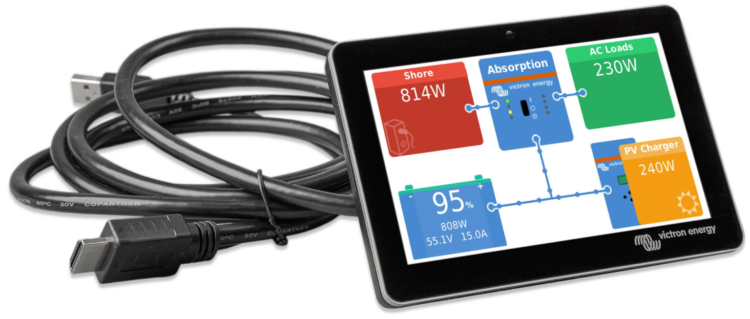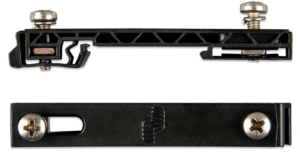The coronavirus (Covid-19) outbreak has caused a slowdown of China economic growth. The International Monetary Fund (IMF) has cut China’s gross domestic product (GDP) growth outlook by 0.4% to 5.6% but also alerted of further alterations, taking into account the extent and magnitude of the impact of the coronavirus outbreak.
The current scenario in the country is going to have an effect on its power demand and generation. China is a world leader in renewable energy investment. The country has proved itself as a leader in wind power installation, wind turbine manufacturing and solar photovoltaic (PV) manufacturing.
The country’s renewable power sector is experiencing the impact of the Covid-19, specifically wind and solar PV, which could witness lower capacity additions in Q1 2020 due to suspended manufacturing and construction works.
China is a leader in terms of solar PV installations and the production of solar PV panels. The country has the largest installed solar power capacity of more than 205GW, contributing more than 35% of the global installations. China’s annual installation was expected to be approximately 30GW in 2020 and the outbreak is likely to impact solar installations at the end of the year in 2020.
Globally, China is the biggest manufacturing economy, including solar PV equipment manufacturing. The solar sector is expected to face the heat, given the tight capacity in solar equipment manufacturing. Of the top ten solar PV manufacturers in terms of module shipments, the majority of them are China-based. These include Jinko Solar, JA Solar, Trina Solar, LONGi Solar, Risen Energy, GCL System and Suntech. Coronavirus-hit province Zhejiang is home to a few of Jinko Solar’s manufacturing works, the largest Solar Module Super League (SMSL), while JA Solar is also involved in manufacturing operations in the province.

KEY FEATURES
Innovative solar cells
Four bus-bar cell technology provides a more robust and powerful module ideal for utility scale applications
Low-light performance
Improved low light performance through advancements in glass technology and surface texturing
Weather resistance
Certified by TUV for high salt mist and ammonia resistance
Strong and durable
Tested and tried to endure up to 5400Pa positive and 2400Pa negative loads
Post Covid-19 outbreak, the Jiangsu province in China took the hardest hit in terms of solar PV production capacity as more than 60% of the country’s solar PV panels are made here as per the Gofa institute, a part of the Chinese government’s National Energy Administration (NEA).
The key manufacturing hubs in the Jiangsu province include Canadian Solar, LONGi Group, Trina Solar, Q-CELLS and JA Solar. Due to the outbreak, the solar power market has concerns with regards to material supply shortage and logistical restrictions due to closed borders, which could increase the price of solar modules that otherwise was rapidly plunging. The shortage will delay equipment deliveries and affect the solar sector’s global supply chain.
While the country is beginning to get back to work at a slow pace after the coronavirus outbreak, many factories have not yet started operating at a full capacity due to shortage of staff and raw materials. Solar PV manufacturers such as Trina Solar has alerted about production delays and LONGi Green has commented that there is no significant outcome on its solar PV panel sales and production and its shipment targets will also not experience any changes this year.
The NEA and the State Grid Corporation of China (SGCC) have notified about the threats coronavirus (Covid-19) outbreak poses to the power industry and the Chinese Photovoltaic Industry Association (CPIA) has recommended the Chinese government to delay connection deadlines of large-scale solar power projects on March 31 and June 30. In the current situation, late project completion will impact the amount of subsidies received.
The coronavirus (Covid-19) outbreak will affect the overall supply chain and solar installations not only in China but globally, mostly the in the US and other countries such as India and Australia, heavily dependent on Chinese raw materials and components. Many solar manufacturing plants located outside of China are dependent on Chinese imports for raw materials such as aluminium framing and solar PV glass.
With more than 75GW installed as of 2019, the US is majorly dependent on solar PV panel production from China. The country is already facing supply bottleneck since the extension in PTC and ITC granted in December 2019. The Q1 production delays due to extended Chinese New Year Holidays as a result of the coronavirus outbreak will worsen the situation for the US developers who will be forced to look out for alternative sourcing avenues.
In the short term, the shock-waves from the Covid-19-sparked collapse in the price of crude have the potential to cause serial disruptions to the energy sector supply chains and prompted oil companies to retrench spending to protect existing oil & gas investments rather than commit capital to renewables.
This has led industry analysts to forecast significant fall-out for the until-now swiftly expanding clean-energy sectors, with the debate now revolving round only how damaging it will be.
n Europe, renewable energy developers and their supply chains have a put a brave — but realistic — face on the immediate impact of Covid-19.
Danish utility Orsted’s chief executive, Samuel Poulsen, assessed the utility’s development plans to be “on track so far” and Germany’s EnBW announced surging profits from renewables had carried it to meet earnings targets early, making it “rock solid” to weather the coronavirus storm.
Both, in the same breath, recognised there were “clear risks” down the road as the pandemic sweeps the globe.
Wind turbine makers have been showing themselves to be resilient, temporarily shutting down nacelle and blade plants for safety reviews, but with the sector overall seeing manufacturing levels running at 96% , according to advocacy body WindEurope.
And, based on early soundings of its membership, SolarPower Europe is sticking to its expectation that the PV build-out in the EU will not be derailed from reaching 35GW by 2023.
The likelihood that this broad regional market stability would be maintained was given a shot in the arm following a statement by 27 EU heads of government in which they jointly argued that Europe’s Green Deal and longer-term energy transition strategy should be dovetailed via a “co-ordinated” approach to Covid-19 emergency measures built around the “green transition and digital transformation”.
US looks gloomier
Things look much less rosy in the US, where the pandemic has placed more than half of the wind power sector’s 44GW short-term project pipeline – and some 35,000 jobs – at risk, according to the American Wind Energy Association, while, by mid-March, the pandemic was already “taking a toll” on US solar, according to Abigail Ross Hopper, chief executive of the Solar Energy Industries Association



























